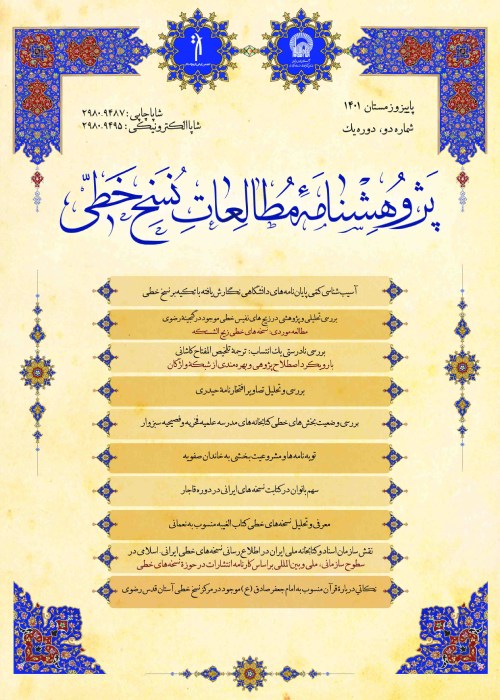Women’s Contribution in Transcribing Iranian Manuscripts in the Qajar Period
The present research is intended to investigate the role of Iranian women in transcribing manuscripts in the Qajar period.
Research method/approach:
It was done by documentary-library method, through which 34 women scribes were identified. After a brief introduction of the female scribes, following questions have been reviewed and answered: the time interval between the scribes and the era of the authors of the transcribed manuscripts; the topics of the manuscripts that they have transcribed, the application and function of the manuscripts; the type of script and language of the transcribed works; the status and the scientific and familial credit of the scribes. Manuscripts handwritten by the author or, in other words, the works of the female researchers, which have the original manuscript, are out of the scope of this research and have not been mentioned.
The absence or lack of women's names in the field of transcribing and editing manuscripts does not mean that they did not have a role in this field; rather, this has been affected by the heavy shadow cast upon them by the government, culture and society, and ultimately by men and families in the past and has prevented the registration of their names and characters. Although in the Qajar period, women gradually enjoyed more personal and functional freedom and were granted more privileged social status compared to their past, but in the findings from the Qajar era, we still see this shadow. Besides, the humbleness and submissiveness of the scribes (even in male scribes) in the past have prevented them from writing their full names. They were either unwilling to mention their names or they considered the names of their fathers and ancestors above their own names, and women would also use such phrases as: ṣabiyya...; bint...; zan… (i.e., daughter of…; wife of…). In the findings of the research, we see scholarly and virtuous women who were allowed to transmit hadiths and narrations, female commentator or marginal annotator, calligraphers, and women who grew up in scholarly families and were the links for transmission of knowledge from the past generation to the future. On the other hand, topics such as literature, jurisprudence, and supplications have been of more interest to women writers; they have also taken more care and made more endeavor in transcribing the works of their families or their ancestors. The Arabic language enjoyed less frequency and popularity than the Persian language among the women of the Qajar era.
- حق عضویت دریافتی صرف حمایت از نشریات عضو و نگهداری، تکمیل و توسعه مگیران میشود.
- پرداخت حق اشتراک و دانلود مقالات اجازه بازنشر آن در سایر رسانههای چاپی و دیجیتال را به کاربر نمیدهد.


